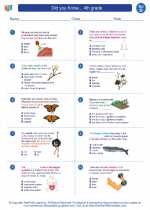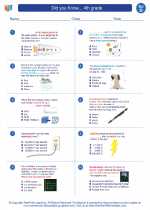Predation
Predation is a biological interaction in which one organism, the predator, hunts, kills, and consumes another organism, the prey. This interaction is a key component of ecological food chains and is essential for maintaining the balance of ecosystems.
Key Concepts:
- Predator-Prey Relationship: Predation involves the predator hunting and consuming the prey, which can be another animal, a plant, or even a microorganism. This relationship influences the population dynamics of both the predator and prey species.
- Adaptations: Predators have evolved various physical and behavioral adaptations to effectively capture and consume their prey. These adaptations may include sharp claws, keen senses, camouflage, and hunting strategies.
- Impact on Ecosystems: Predation helps control the population of prey species, preventing overpopulation and maintaining the balance of the ecosystem. It also influences the distribution and behavior of both predator and prey species.
- Food Webs: Predation is a fundamental aspect of food webs, as it establishes the flow of energy and nutrients within an ecosystem. Predators occupy higher trophic levels, while prey species are found at lower trophic levels.
Study Guide:
Here are some key points to focus on when studying predation:
- Identify examples of predator-prey relationships in different ecosystems, such as lions and zebras in the savanna or hawks and mice in the forest.
- Describe and compare the physical and behavioral adaptations of different predators, including their hunting techniques and specialized features.
- Explain the consequences of changes in predator or prey populations on the overall ecosystem, considering factors such as competition, resource availability, and biodiversity.
- Illustrate and analyze food webs to demonstrate the interconnected relationships between predators, prey, and other organisms within an ecosystem.
Understanding predation is crucial for comprehending the intricate balance of natural systems and the interdependence of organisms within ecosystems.
[Predation] Related Worksheets and Study Guides:
.◂Science Worksheets and Study Guides Fourth Grade. Did you Know... 4th grade
Study Guide Did you Know... 4th grade
Did you Know... 4th grade  Worksheet/Answer key
Worksheet/Answer key Did you Know... 4th grade
Did you Know... 4th grade  Worksheet/Answer key
Worksheet/Answer key Did you Know... 4th grade
Did you Know... 4th grade  Worksheet/Answer key
Worksheet/Answer key Did you Know... 4th grade
Did you Know... 4th grade 

 Worksheet/Answer key
Worksheet/Answer key
 Worksheet/Answer key
Worksheet/Answer key
 Worksheet/Answer key
Worksheet/Answer key

The resources above cover the following skills:
Core Ideas for Knowing Science
Life Science
Organisms are organized on a cellular basis and have a finite life span.